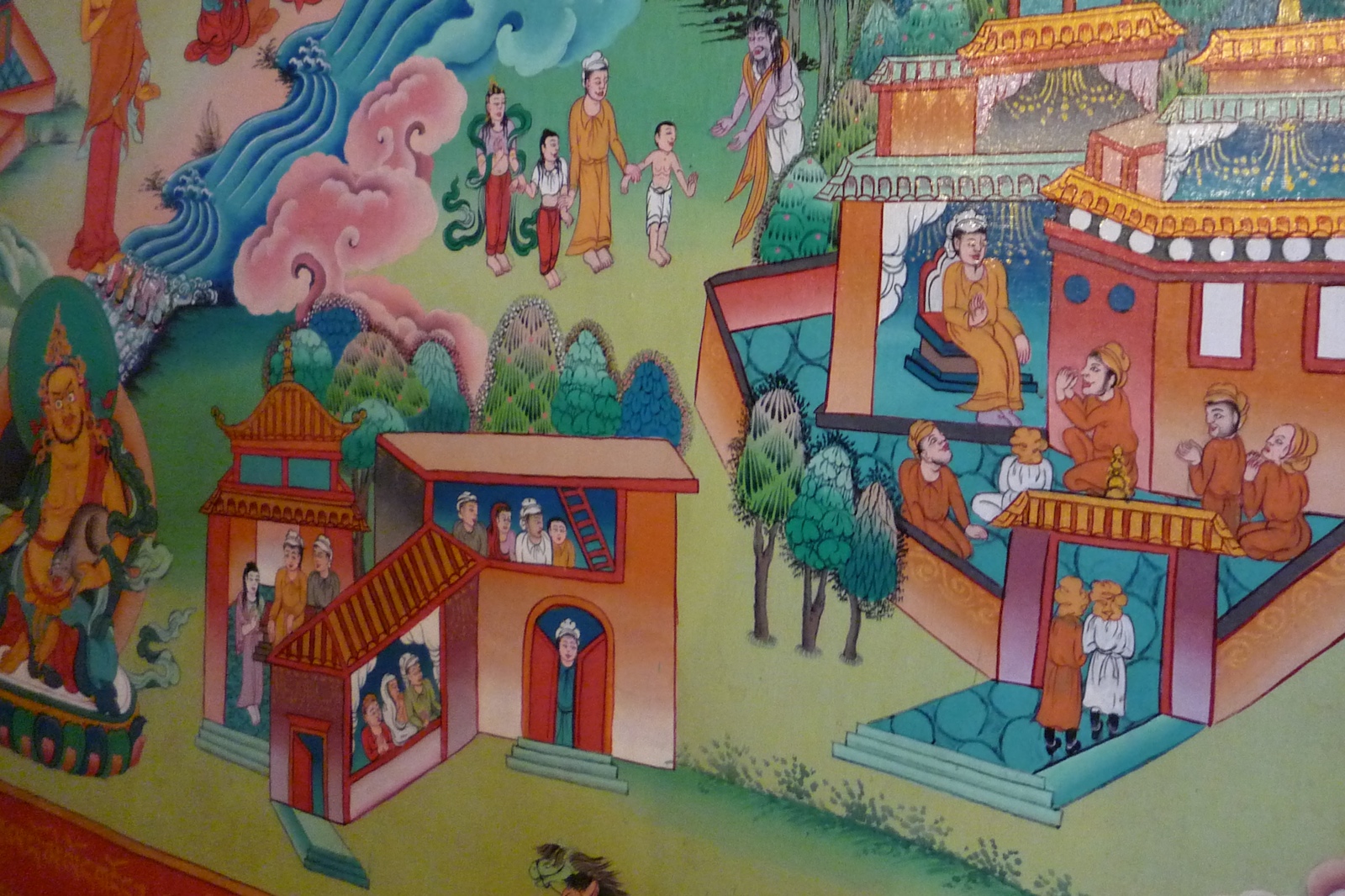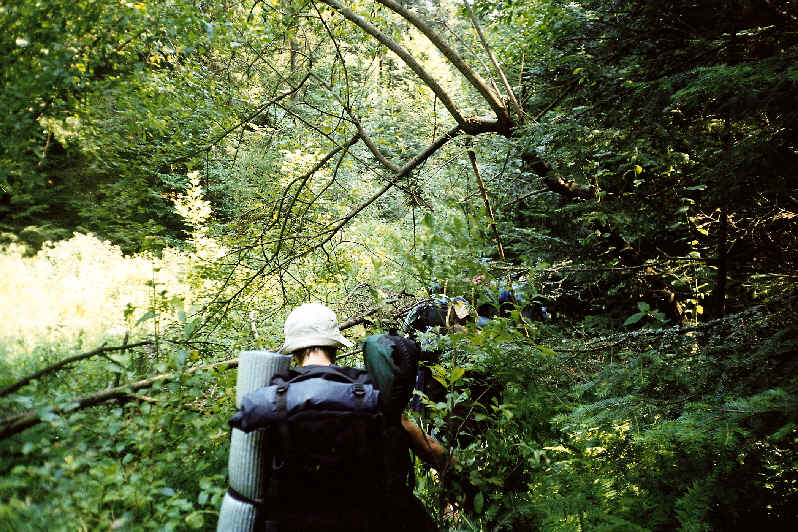|
Imja River
The Imja Khola ( ne, इम्जा खोला) is a tributary of the Dudh Kosi in Nepal. It drains the slopes of Mount Everest. The Khumbu Glacier melts into the Lobujya (Lobuche) River, which flows southward as the Imja Khola to its confluence with the Dudh Kosi at Tengboche. The Imja Khola collects water from the Imja Glacier through the Dingboche Valley. River course The river rises in the lake Imja Tsho, which is mainly formed by the waters of the Imja Glacier, it flows in the direction southwest through the village of Dingboche, then it merges with the river Lobuche, which flows south from the Khumbu Glacier. then flows southward to its confluence with the Dudh Kosi near the village of Tengboche Trekking The Imja Khola is on the trekking route in the Everest base camp region, between Thyangboche and Dingboche at . During the Everest Base Camp Trek, trekkers cross a suspension bridge, over the Imja Khola, moving towards the village of Dingboche. Dingboche, the 'Summer V ... [...More Info...] [...Related Items...] OR: [Wikipedia] [Google] [Baidu] |
Imja Glacier
Imja Glacier ( ne, इम्जा हिमनदी) is located in the Himalayas, in the Solukhumbu District of Nepal. It originates on the western face of Kali Himal, , and skirts the southern slopes of Imja Tse or Island Peak, south-east of Mount Everest. It is joined by the Lhotse Shar and Ambulapcha Glaciers. The glacier forms the eastern extent of Imja Tsho, which in turn drains through the Dingboche valley to the Imja Khola, Dudh Kosi, Ganges River and finally the Indian Ocean. See also *List of glaciers in Asia This is a list of glaciers in Asia. List of glaciers China * Angsi Glacier- Tibet * :zh:八一冰川, Bayi Glacier - Qinghai * :zh:海螺沟冰川, Hailogou Galicer - SiChuan * July 1 Glacier - GanSu * Kangshung Glacier- Tibet * :zh:来古冰� ... References External links Everest glacier 'turning into a lake' Glaciers of Nepal Solukhumbu District {{Nepal-glacier-stub ... [...More Info...] [...Related Items...] OR: [Wikipedia] [Google] [Baidu] |
Dudh Kosi
Dudh Koshi (दुधकोशी नदी, ''Milk-Koshi River'') is a river in eastern Nepal. It is the highest river in terms of elevation. Koshi river system The Kosi River, or Sapt Koshi, drains eastern up. It is known as Sapta Koshi because of the seven rivers which join together in east-central Nepal to form this river. The main rivers forming the Sapta Koshi River system are – the Sun Koshi (सुन कोशी)], the Indravati River, Nepal, Indravati River (इन्द्रावती), the tama Koshi (तामा कोशी), the Dudh Koshi (दुध कोशी), the Arun River (अरुण), Tamor River (तमोर) and Likhu River. The Dudh Kosi river originates from the high-altitude areas of Mount Everest (8848 metres) and the snow and glacier melt contributes significant portion of streamflow, especially during the dry season. The combined river flows through the Chatra Gorge in a southerly direction to emerge from the hills. Course The river drain ... [...More Info...] [...Related Items...] OR: [Wikipedia] [Google] [Baidu] |
Nepal
Nepal (; ne, नेपाल ), formerly the Federal Democratic Republic of Nepal ( ne, सङ्घीय लोकतान्त्रिक गणतन्त्र नेपाल ), is a landlocked country in South Asia. It is mainly situated in the Himalayas, but also includes parts of the Indo-Gangetic Plain, bordering the Tibet Autonomous Region of China to the north, and India in the south, east, and west, while it is narrowly separated from Bangladesh by the Siliguri Corridor, and from Bhutan by the Indian state of Sikkim. Nepal has a diverse geography, including fertile plains, subalpine forested hills, and eight of the world's ten tallest mountains, including Mount Everest, the highest point on Earth. Nepal is a multi-ethnic, multi-lingual, multi-religious and multi-cultural state, with Nepali as the official language. Kathmandu is the nation's capital and the largest city. The name "Nepal" is first recorded in texts from the Vedic period of the India ... [...More Info...] [...Related Items...] OR: [Wikipedia] [Google] [Baidu] |
Koshi River
The Kosi or Koshi ( ne, कोशी, , hi, कोसी, ) is a transboundary river which flows through China, Nepal and India. It drains the northern slopes of the Himalayas in Tibet and the southern slopes in Nepal. From a major confluence of tributaries north of the Chatra Gorge onwards, the Kosi River is also known as Saptakoshi ( ne, सप्तकोशी, ) for its seven upper tributaries. These include the Tamor River originating from the Kanchenjunga area in the east and Arun River and Sun Kosi from Tibet. The Sun Koshi's tributaries from east to west are Dudh Koshi, Bhote Koshi, Tamakoshi River, Likhu Khola and Indravati. The Saptakoshi crosses into northern Bihar, India where it branches into distributaries before joining the Ganges near Kursela in Katihar district. The Kosi River is long and drains an area of about in Tibet, Nepal and Bihar.Nayak, J. (1996). ''Sediment management of the Kosi River basin in Nepal''. In: Walling, D. E. and B. W. Webb (eds.) ''E ... [...More Info...] [...Related Items...] OR: [Wikipedia] [Google] [Baidu] |
Mount Everest
Mount Everest (; Tibetan: ''Chomolungma'' ; ) is Earth's highest mountain above sea level, located in the Mahalangur Himal sub-range of the Himalayas. The China–Nepal border runs across its summit point. Its elevation (snow height) of was most recently established in 2020 by the Chinese and Nepali authorities. Mount Everest attracts many climbers, including highly experienced mountaineers. There are two main climbing routes, one approaching the summit from the southeast in Nepal (known as the "standard route") and the other from the north in Tibet. While not posing substantial technical climbing challenges on the standard route, Everest presents dangers such as altitude sickness, weather, and wind, as well as hazards from avalanches and the Khumbu Icefall. , over 300 people have died on Everest, many of whose bodies remain on the mountain. The first recorded efforts to reach Everest's summit were made by British mountaineers. As Nepal did not allow foreigners ... [...More Info...] [...Related Items...] OR: [Wikipedia] [Google] [Baidu] |
Khumbu Glacier
The Khumbu Glacier ( ne, खुम्बु हिमनदी) is located in the Khumbu region of northeastern Nepal between Mount Everest and the Lhotse-Nuptse ridge. With elevations of at its terminus to at its source, it is the world's highest glacier. The Khumbu Glacier is followed for the final part of the trail to one of the Everest Base Camps. The start of the glacier is in the Western Cwm near Everest. The glacier has a large icefall, the Khumbu Icefall, at the west end of the lower Western Cwm. This icefall is the first major obstacle—and among the more dangerous—on the standard south col route to the Everest summit. It is also the largest glacier of Nepal. The end of Khumbu Glacier is located at . Overview Khumbu Glacier, Khumbu Icefall, Nepal, Asia.jpg, Khumbu Glacier and Khumbu Icefall Khumbu Glacier from Kala Patthar, Mountains of Nepal, Asia.jpg, Khumbu Glacier Khumbu glacier in relation to everest.jpg, Map See also * * List of glaciers * Retreat of gl ... [...More Info...] [...Related Items...] OR: [Wikipedia] [Google] [Baidu] |
Lobuche, Nepal
Lobuche (or Lobuje) is a small settlement near Mount Everest in the Khumbu region of Nepal. It is one of the last overnight stops with lodging on the "trail to base camp", a hike that climbers make on their way to Everest Base Camp (South) when attempting an ascent of Everest via the standard southeast route. It is also a popular stop among trekkers in the area. From there they can complete the trail on to EBC or stop at Gorak Shep, the last stop with lodging on the trail, and climb the modest nearby peak, Kala Patthar (5,545 m, 18,192 ft), for a rare view of the Everest summit. The structure of Everest is such that its actual summit is not visible from Base Camp. Lobuche, elevation of about , is situated about east of Nepal's capital Kathmandu and lies near the foot of the Khumbu Glacier, approximately 8.5 km SW of Everest Base Camp. It shares its name with several peaks in the area: Lobuche Far East, Lobuche East and Lobuche West (a separate mountain further west) ... [...More Info...] [...Related Items...] OR: [Wikipedia] [Google] [Baidu] |
Tengboche
Tengboche (or Thyangboche) is a village in Khumbu Pasanglhamu rural municipality in the Khumbu subregion of Province No. 1 in Nepal, located at . In the village is an important Buddhist monastery, Tengboche Monastery, which is the largest gompa in the Khumbu region. The structure was built in 1923. In 1934, it was destroyed by an earthquake but subsequently rebuilt. It was destroyed again by a fire in 1989, and again rebuilt with the help of volunteers and the provision of foreign aid. Tengboche has a panoramic view of the Himalayan mountains, including the well-known peaks of Tawache, Everest, Nuptse, Lhotse, Ama Dablam, and Thamserku. Tenzing Norgay, the first man to reach the summit of Mount Everest with Sir Edmund Hillary, was born in the area in the village of Thani and was once sent to Tengboche Monastery to be a monk. History The Khumbu valley, where Tengboche is located, came under the influence of Buddhism about 350 years ago. Ancient scriptures of Tibet refer to this ... [...More Info...] [...Related Items...] OR: [Wikipedia] [Google] [Baidu] |
Dingboche
Dingboche (दिङबोचे) is a Sherpa village in the Khumbu region of north eastern Nepal in the Chukhung Valley. Its population was estimated at approximately 200 in 2011. It is situated at an altitude of . Tourism Dingboche is a popular stop for trekkers and climbers headed to Mount Everest, Ama Dablam or Imja Tse. Parties will typically spend two nights in Dingboche for acclimatization purposes. The village relies heavily on tourists with lodges and tenting areas comprising most of Dingboche. The Imja River flows directly east of the village. A helicopter landing pad is located just west of the Imja River, near Moonlight Lodge. Dingboche is home to an Internet cafe (using satellite technology) and one of the world's highest billiard parlors. One of the characteristics of Dingboche is the kilometers of stone walls, built using the stones of different sizes that cover the entire Valley of Imja. These stones are removed in order to plow the soil and end up being pi ... [...More Info...] [...Related Items...] OR: [Wikipedia] [Google] [Baidu] |
Trekking
Backpacking is the outdoor recreation of carrying gear on one's back, while hiking for more than a day. It is often an extended journey, and may involve camping outdoors. In North America tenting is common, where simple shelters and mountain huts, widely found in Europe, are rare. In New Zealand, hiking is called tramping and tents are used alongside a nationwide network of huts. Hill walking is an equivalent in Britain (but this can also refer to a day walk), though backpackers make use of a variety of accommodation, in addition to camping. Backpackers use simple huts in South Africa. Trekking and bushwalking are other words used to describe such multi-day trips. Backpacking as a method of travel is a different activity, which mainly uses public transport during a journey which can last months. Definition Backpacking is an outdoor recreation where gear is carried in a backpack. This can include food, water, bedding, shelter, clothing, stove, and cooking kit. Given that back ... [...More Info...] [...Related Items...] OR: [Wikipedia] [Google] [Baidu] |





.jpg)
